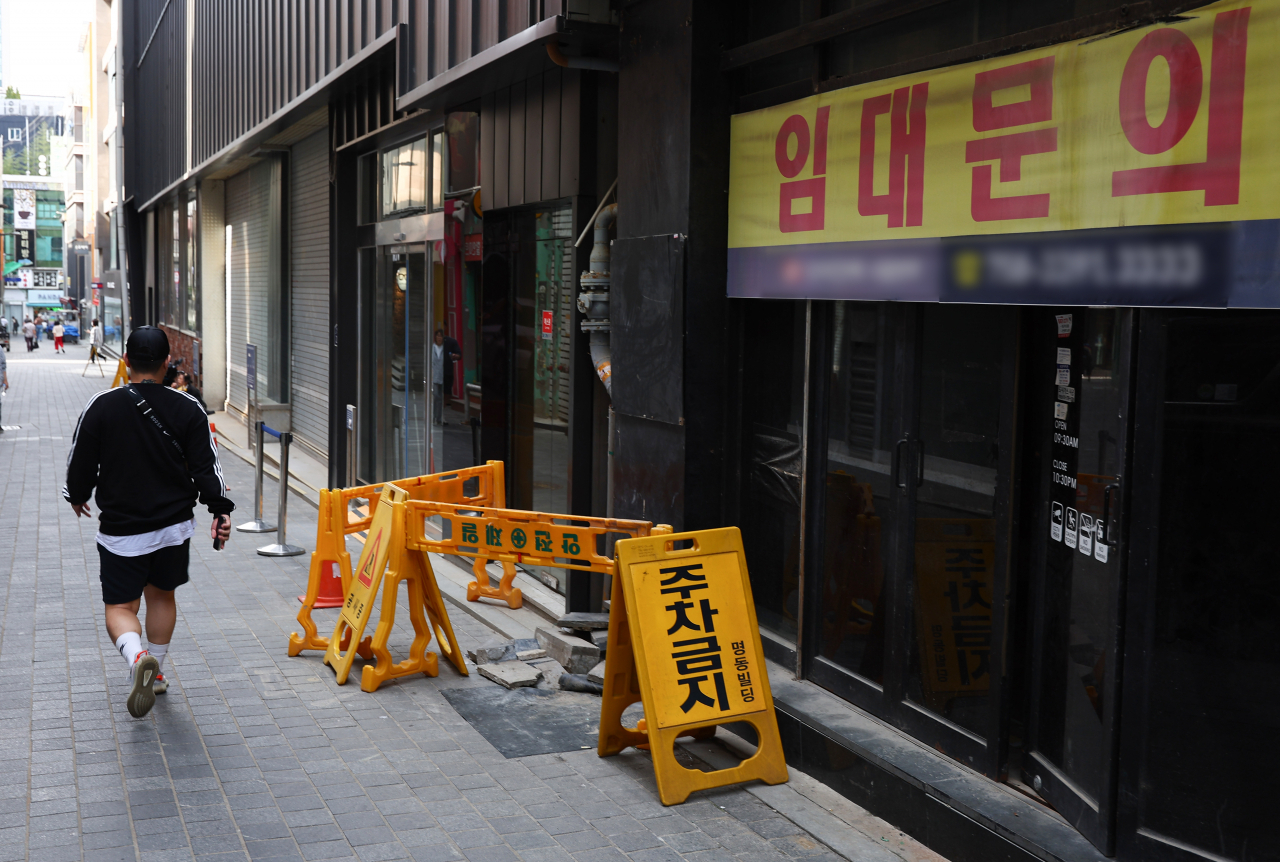
The reliance on bank loans among self-employed South Koreans has surged considerably since the onset of the pandemic, with the overall loan volume and the default rate rising steeply in the past four years.
According to data from the nation's major credit ratings firm Nice, provided to Rep. Yang Kyung-sook of the main opposition Democratic Party of Korea, the outstanding loans to self-employed individuals from local financial institutions totaled 1,112.74 trillion won ($811 billion) as of the end of March.
This figure, inclusive of household and business loans, represents a significant 51 percent increase from the pre-pandemic level four years and three months ago. In late 2019, some 2.1 million individual business owners had borrowed approximately 738.6 trillion won. Since then, the number of indebted individual business owners has also surged by 60 percent to 3.36 million this March.
Of particular concern is the steep rise in default rates. Over the same period, loans overdue for more than three months have doubled, from 15.62 trillion won to 31.3 trillion won. This indicates that 2.8 percent of the total loans granted to individual business owners are now at risk of default, up from 2.1 percent in 2019. On year, the default balance surged by 53.4 percent from 20.4 trillion won tallied in March last year.
Nearly half of the self-employed individuals in debt have borrowed from three or more lenders, with around 1.72 million borrowers owing 689.72 trillion won in total. Compared to 2019, both the number of individuals with multiple loans and their loan balance have surged by around 60 percent.
Those with multiple debts are encountering increasing challenges in repayment. Among all loans held by these debtors, approximately 24.75 trillion won is overdue, more than doubling the 12.12 trillion won recorded in 2019 and marking a 52 percent rise from the previous year. The proportion of delinquent loans by these multiple debtors relative to the total default loans by the self-employed has also risen slightly, from 77 percent at the end of 2019 to 79 percent in March.
Furthermore, the default rates are notably higher among younger self-employed individuals. As of the end of last year, the rate was highest among those under 30, with around 6.59 percent having loans behind schedule for more than three months. Those in their 30s followed at 3.9 percent, trailed by those in their 40s at a 3.61 percent default rate. Both individuals in their 20s and 30s experienced the largest increases in the overdue rate, each surging by 2.22 percent and 1.63 percent, respectively, compared to the previous year.
Among borrowers who have taken out loans from multiple institutions, those in their 30s had the highest default rate at 62.5 percent as of the end of December, followed by those in their 60s at 58 percent.


![[H.eco Forum] H.eco Forum calls for transition to clean, carbon-free energy](http://res.heraldm.com/phpwas/restmb_idxmake.php?idx=644&simg=/content/image/2024/05/22/20240522050668_0.jpg&u=20240522175145)
![[Exclusive] LACMA admits it needs further research on donated Korean paintings](http://res.heraldm.com/phpwas/restmb_idxmake.php?idx=644&simg=/content/image/2024/05/22/20240522050568_0.jpg&u=20240523001632)


![[Bridge to Africa] Africa-Korea partnership: Why it matters for future](http://res.heraldm.com/phpwas/restmb_idxmake.php?idx=644&simg=/content/image/2024/05/22/20240522050681_0.jpg&u=20240522182351)
![[Herald Interview] Korean adoptees embark on journeys to find roots](http://res.heraldm.com/phpwas/restmb_idxmake.php?idx=644&simg=/content/image/2024/05/22/20240522050754_0.jpg&u=20240522190539)
![[Graphic News] Medical tourists visiting Korea reach record high](http://res.heraldm.com/phpwas/restmb_idxmake.php?idx=644&simg=/content/image/2024/05/21/20240521050794_0.gif&u=20240523171313)










![[Today’s K-pop] NCT127 drops single in Japan to mark anniversary](http://res.heraldm.com/phpwas/restmb_idxmake.php?idx=642&simg=/content/image/2024/05/23/20240523050694_0.jpg&u=20240523175657)